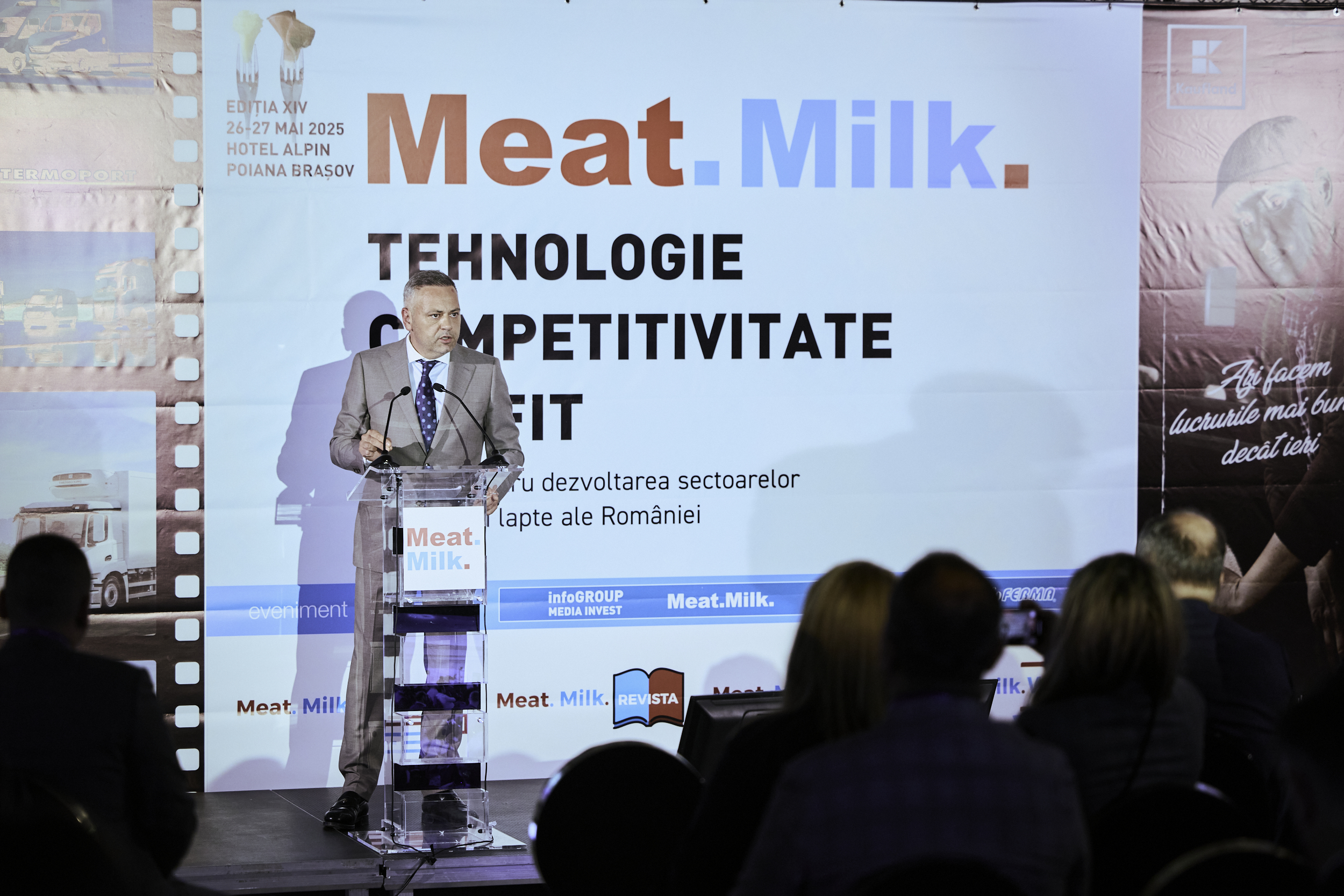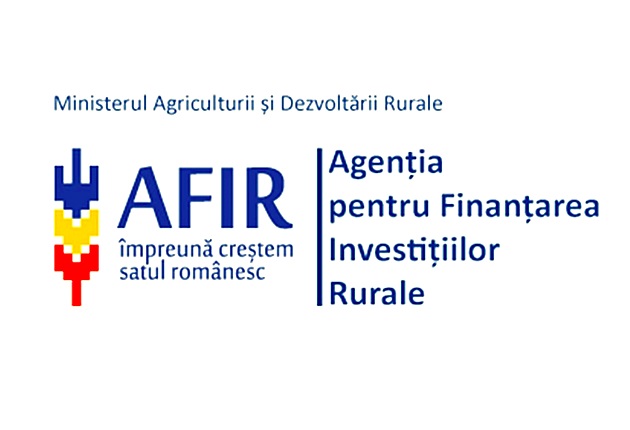
(Author: Ioan Serbanescu) Counterfeit is and will remain a phenomenon difficult to remove from the domestic food market and the foreign markets, as long as there will not be improved the control of goods. The perception of some changes in the meat products, influenced by microbiological and physico-chemical factors is facilitated by assessing the morphological structure, the external characteristics and the chemical composition of fresh meat, highlighted features including through inspection, taste, smell and palpation. A direct and honest relationship between producers and consumers In the laboratory investigations, there are many situations where it is considered appropriate to specify if meat is normal, if meets all the health and quality requirements or it is fraudulently substituted with other types of abnormal meat, which has microbiological, physicochemical, organoleptic and / or toxicological characteristics changed; some of these mixtures are outside the law, and others showing a decline in quality. Consumers should have the right to refuse products that present oxidized surfaces, odor and color changed and "tired" appearance, meat products showing pseudo- frozen aspect (subject of thawing), products whose properties certainly present changes from a similar product which has benefited from good conditions, products having doubts about the quality and the labeling information. Purchasers are entitled to expect that the food they consume is safe and suitable for consumption. Food has undergone major changes over the past two decades, which is why they were made and applied new techniques of production, preparation and distribution. There are currently met several factors which compete for primacy in the negative influence on the quality of meat and meat preparations: the pursuit of profit and - not infrequently - producers or traders unconsciousness, resulting in the failure to respect the technologies and the manufacturing recipes. In all stations on the route leading to the consumer, including those of farmers, producers and processors, it is necessary to ensure optimal conditions for the provision of safe and adequate food for consumption. On the Romanian market of meat, today, traders and producers of goods enjoying freedom of action. In counterfeiting, food substitution is even more dangerous as the effects are not confined to defraud consumers but threatens the health and their lives. The successful attempt to lie the buyers through such procedures are, in terms of law, offenses which (if proved through veterinary legal expertise) enter in the area criminal law. In the food sector, the counterfeit involves "addition to any natural or synthetic substances in products, in order to amend or conferring properties that products do not justify by their natural composition and manufacturing standards." In the medico- veterinary practice, an acute problem of interest is the ability to identify, prior to public consumption, the illegal additions, counterfeiting and substitution of food of animal origin and - especially - meat products: sausages, meat, minced meat with / without spices, (semi) canned meat. The most dangerous and common frauds of this kind are committed in the private area of this sector and in the clandestine trade with meat, introducing in the consumers' food: 1. Altered meat, whose state is masked by transforming and processing in the manufacturing process by adding odorant, spices, preservatives and dyes. 2. Meat coming from species that specifically has to be mentioned the origin (horse, nutria, etc.). 3. Meat from inedible species (fox, cat, dog, etc..). 4. Meat from dead animals, slaughtered in agony or in particular physiological states, which make them unsuitable for butchery and consumption. 5. Meat from sick animals whose slaughtering is prohibited by law. The substitution of the species where the meat comes from Determination of the animal species of meat origin is of particular importance in the laboratory and forensic expertise, due to the ability to detect any substitutions, fraudulent or aroused due to human error, of the high nutritional value meat, with meat from in other animal species with low nutritional value. Substitutions can be also found in meat from animals that are not normally consumed with meat from animals that have traditionally not consumed in our country. On the whole carcasses or on the quarters of carcasses, the determination can be simply made by following the meat and fat characters, by the differences in conformation or by the bone characteristics. For the minced processed meat or for the parceling into smaller pieces, the determination is more difficult, requiring laboratory examination. The determining of species by the anatomical criteria is based on the characteristics of (semi) carcasses, by the organs or by the quarters of meat, while pursuing the bone criteria. A special role in specifying the species are the organoleptic characteristics, providing valuable information in the examination. Determination of species in laboratory methods is a method which is used when the anatomical characteristics and organoleptic properties cannot anymore be used to determine the species of the meat. Laboratory research involves immunological tests and physicochemical investigations. In this way, it can be determined a number of physico-chemical indices, mainly: melting point, freezing point, iodine index Polenske index and Reichert-Meissl index. These indices are stable and reveal both the species which the fat comes from and any falsification by substituting high fat quality with lower quality fats. Based on these indices of fat can be detected possible substitutions by comparing the results obtained in the laboratory research with normal values provided by key animal fats indices. The expertise done on meat to specify the species of the meat is based on immunological processes. More sensitive than chemical methods, these are based on the determination of the normal components of meat (glycogen) or metabolism produces (creatine), suffering major quantitative variations and can not be precision tests. Among immunological methods, we notice the sero-precipitation reaction Ulenhuth and the immune-diffusion method in agar gel. The latter is practiced with the most satisfactory results in the world, being simple, fast and reliable. The immune-enzymatic test ELISA, experimented to determine the species, confirms that it can be applied for this purpose, due to the high sensitivity reactions in heterologous systems leads to highlighting titers similar to those of the homologous system. Meat substitution with altered meat Laboratory tests presents the countless situations where it is considered necessary to clarify whether meat is normal and meets all sanitation and quality requirements or it is fraudulently substituted with other categories of meat, with modified features, some of which are prohibited to be consumed because of the diminished quality. Laboratory specialist with the veterinarian has to examine and diagnose these types of abnormal meats and determine their destination: free admission in consumption, conditional admission in consumption under veterinary supervision, distortion, conditioning and confiscation. Normal meat after cutting, presents characteristics that vary by species, age, fattening status and heat delivery. In order to assess the freshness status of the meat is determined the pH, there are analyzed the protein decomposition products (amino acids in the free state, hydrogen sulfide, indole, amines, ammonia, cresol, skatole, phenols, betaines, mercaptans, etc.) as well as those of hydrolysis, including the oxidation of fat of meat. Detection of ammonia in the free state can be performed by Nessler method; simultaneous determination of nitrogen in amino groups and of the free ammonia is made by the determination of easily hydrolysable nitrogen. Hydrogen sulphide is formed generally with tioalcohols (ethanethiol) in an advanced stage of decomposition of proteins and can be determined by the usual laboratory analysis. In the initial stage of the oxidation of fats is produced the addition of oxygen at the double bonds to form peroxides, stage that can be appreciated by the peroxide index. The advanced state of oxidation of fats may be determined by identification of specific reactions of aldehydes. Altered meat presents radical changes which distinguish it from normal meat. When organoleptic changes are conclusive the bacteriological examination is superfluous. In contentious cases, the technical expertise, this exam is required to provide more objective means to the decision. Laboratory examinations can be made on meat as such, or aqueous extract from the meat. Basically, meat with physico-chemical or biological sensory unchanged is classified according to age, weight gain and slicing: - Beef is classified by age of animals where the meat comes from (adult beef and veal) and after fattening state. Delivered is made in quarters or demi-carcasses without head, with tail, and without extremities from the carpo-metacarpal or tarso-metatarsal articulations, without residual organ, without mammary gland and without adhering fat. - Pork, depending on the state of fattening, is processed in two types: Type I -with fat and Type II - no fat. The semi-carcasses must be delivered without head, extremities, no lard and no tail. Processing is done by skinning or scalding. - Sheep and goats meat are classified by age into: sheep / goats reformed, young animals fattened and lamb. Meat is presented in whole carcasses and for the young animals remaining also the head in natural adherence. - Poultry is classified in broiller (for breaded, skewer, the tray etc) and adult birds. Depending on the species birds fall in galinacea and palmipeds. Meat is delivered in whole carcasses, eviscerated, without head, feet, as well as cuts (lower leg / upper chest, wings, cutlery). Fraudulent practices, the most dangerous and frequently encountered in the manufacture and marketing of meat and derived products are: - Substituting meat quality with lower quality meat (eg replacing meat with MDM - mechanically deboned meat with low biological value and microbiological quality); - The sale of altered meat, whose fault is masked by processing and conversion into products with added spices, food additives and / or other ingredients; - Counterfeit of meat products such as minced meat, meat products (salami, sausage, tenderloin, ham specialties), canned meat by replacing valuable ingredients with inferior ingredients: rind, fat, tendons, ears, stomachs; - Introduction of water retention additives (E-407 carrageenan gum, dyes, carmine E-120, E-452 polyphosphates, starch E-1404), soy, flour, concentrates, textured protein, other ingredients or spices in large quantities or unauthorized. The discovery of counterfeit, in the case of substitution of good quality meat with an inferior quality meat, using the determination of collagen content (characterized by abundance of hydroxyproline amino acid) is a very useful method, in particular for the products obtained from of minced meat. Replace meat protein with vegetable protein (eg soya) or by adding ingredients and / or additives, water, starch, polyphosphates, salt, nitrates / nitrites is very frequently in the products: - Raw products(minced meat, fresh meat); - Pasteurized (rolls, sirloin, ham); - Smoked (sausage, bacon, ham); - Pasteurized and hot smoked (parizer, salami); - Hot smoked, pasteurized and dried (summer sausage); - (Semi) canned meat, with / without the addition of vegetables. Often, there is used frozen meat, with a low capacity for moisture, water retention. In order to increase the water retention capacity there are added different hydrocolloids as salts of phosphorus, modified polysaccharides, modified starch, carboxy methyl cellulose. Thanks to glycerides such as starch, meat products which, naturally, have glycemic index 0 (zero) turns products with glycemic index, requesting additional work for the consumer pancreas.




